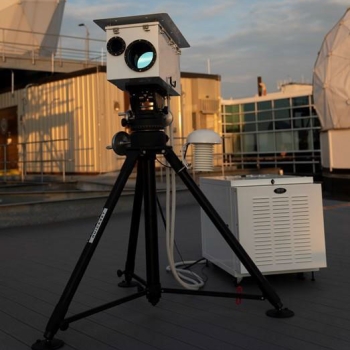Ground-Based System for Geolocation of Perpetrators of Aircraft Laser Strikes

Lasers pointed at aircraft can potentially damage pilots' eyes and disrupt their ability to safely operate the aircraft, posing significant dangers to commercial aviation. As the number of incidents have increased over the years, there is a growing need for a technology that is capable of detecting these laser-generated safety hazards, locating their origin, and alerting the appropriate authorities. Current approaches to combating laser attacks on aircraft involve detecting and tracking the laser source. Detection and geolocation can be challenging because of the dispersed nature of the laser light and the difficulty in identifying its origin. These methods can be slow, lack precision, or rely on aircraft-based sensors alone, leaving commercial aviation vulnerable to potential attacks and making it difficult to successfully apprehend and prosecute the perpetrators.
Technology Description
The ground-based system consists of at least two spaced-apart sensors, each containing a large aperture lens with a laser line or passband filter to deliver light to a cooled charge-coupled-device (CCD) camera. These sensors detect off-axis scattered light from the laser source and form imagery that is processed to locate the laser source. The processor generates a vector from the intersection of planes of interest from the two sensors; this vector is then propagated to the ground by using a terrain map to establish laser origin coordinates. This system offers a unique solution by incorporating an alerting system for rapid law-enforcement response and post-event algorithms for overlaying laser beam direction with aircraft coordinates to aid in prosecution activities. As a result, the disclosed system provides consistent protection for high-criticality airspace around airports, leading to a greater potential for perpetrator apprehension, prosecution, and strong deterrent effects.
Benefits
- Increased safety for commercial aviation
- Improved detection and geolocation of laser sources
- Rapid law-enforcement response
- Greater potential for perpetrator apprehension and prosecution
- Strong deterrent effects on potential offenders
Potential Use Cases
- Airport safety and security
- Protection of high-criticality airspace around airports
- Enhanced law-enforcement response to laser threats
- Supplement to existing aircraft-based laser detection systems
- Support for litigation proceedings against perpetrators